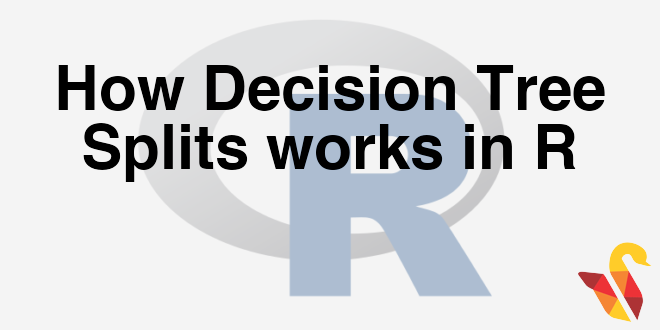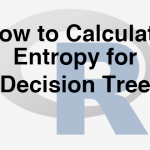
The Splitting Criterion
In previous section, we studied about The Decision Tree Approach
- The best split is
- The split that does the best job of separating the data into groups
- Where a single class(either 0 or 1) predominates in each group
Example Sales Segmentation Based on Age
Example Sales Segmentation Based on Gender
Impurity (Diversity) Measures
- We are looking for a impurity or diversity measure that will give high score for this Age variable(high impurity while segmenting), Low score for Gender variable(Low impurity while segmenting)
- Entropy: Characterizes the impurity/diversity of segment
- Measure of uncertainty/Impurity
- Entropy measures the information amount in a message
- S is a segment of training examples, p+ is the proportion of positive examples, p- is the proportion of negative examples
- Entropy(S) = \(-p_+ log_2p_+ – p_- log_2 p_-\)
- Where \(p_+\) is the probabailty of positive class and \(p_-\) is the probabailty of negative class
- Entropy is highest when the split has p of 0.5.
- Entropy is least when the split is pure .ie p of 1
Entropy is highest when the split has p of 0.5
- Entropy(S) = \(-p_+ log_2p_+ – p_- log_2 p_-\)
- Entropy is highest when the split has p of 0.5
- 50-50 class ratio in a segment is really impure, hence entropy is high
- Entropy(S) = \(-p_+ log_2p_+ – p_- log_2 p_-\)
- Entropy(S) = \(-0.5*log_2(0.5) – 0.5*log_2(0.5)\)
- Entropy(S) = 1
Entropy is least when the split is pure .ie p of 1
- Entropy(S) = \(-p_+ log_2p_+ – p_- log_2 p_-\)
- Entropy is least when the split is pure ie p of 1
- 100-0 class ratio in a segment is really pure, hence entropy is low
- Entropy(S) = \(-p_+ log_2p_+ – p_- log_2 p_-\)
- Entropy(S) = \(-1*log_2(1) – 0*log_2(0)\)
- Entropy(S) = 0
The less the entropy, the better the split
- The less the entropy, the better the split
- Entropy is formulated in such a way that, its value will be high for impure segments
The next post is about How to Calculate Entropy for Decision Tree Split.




